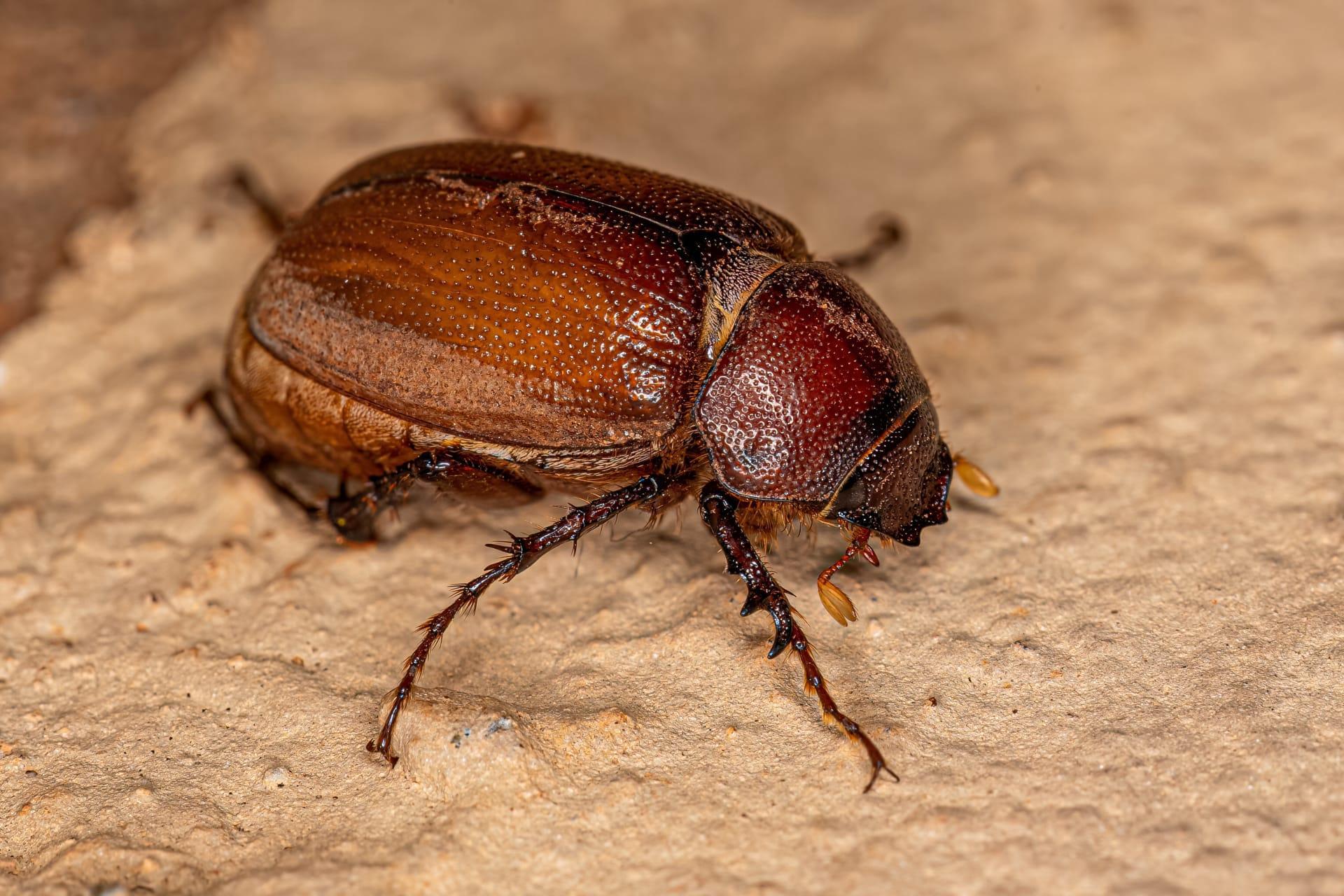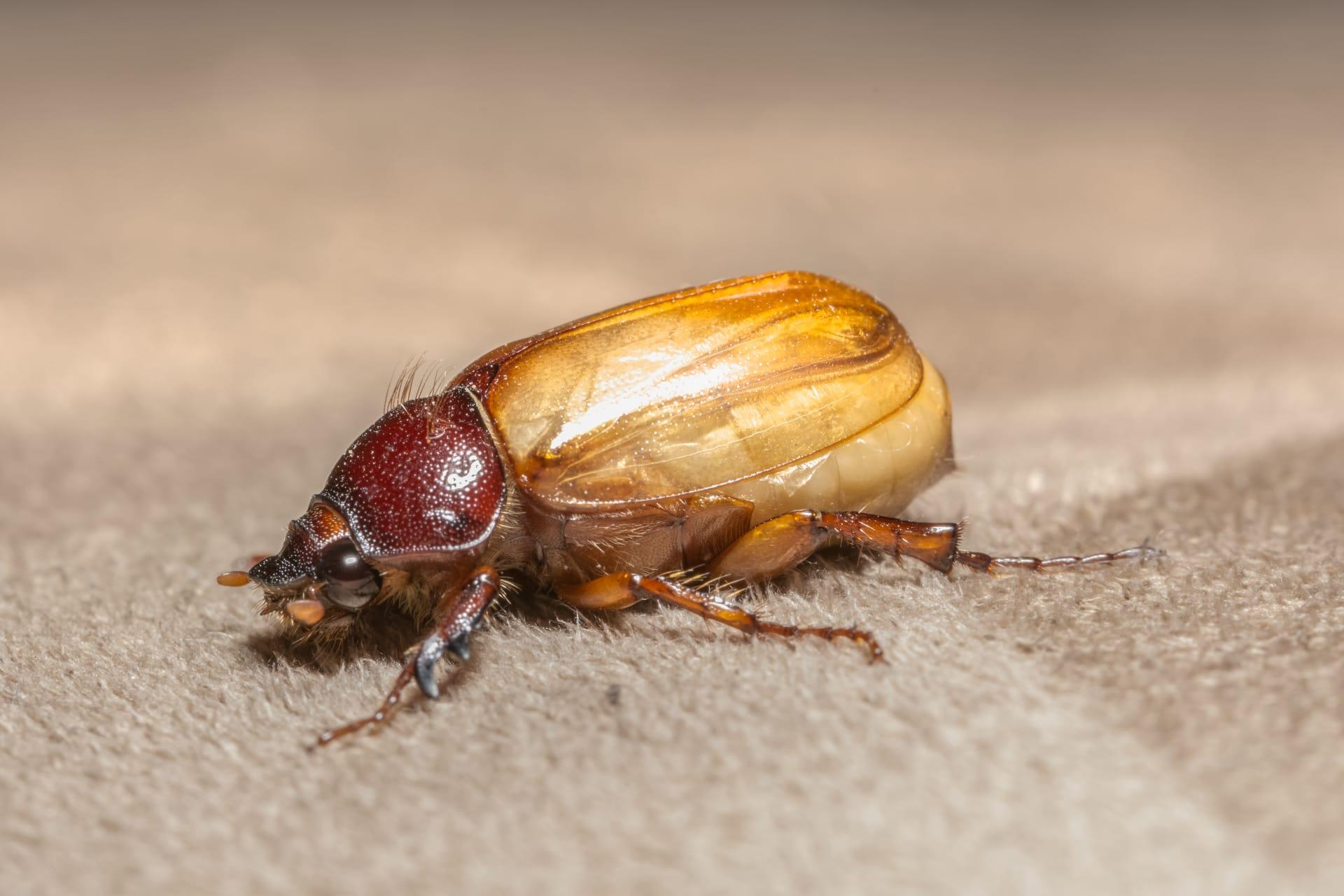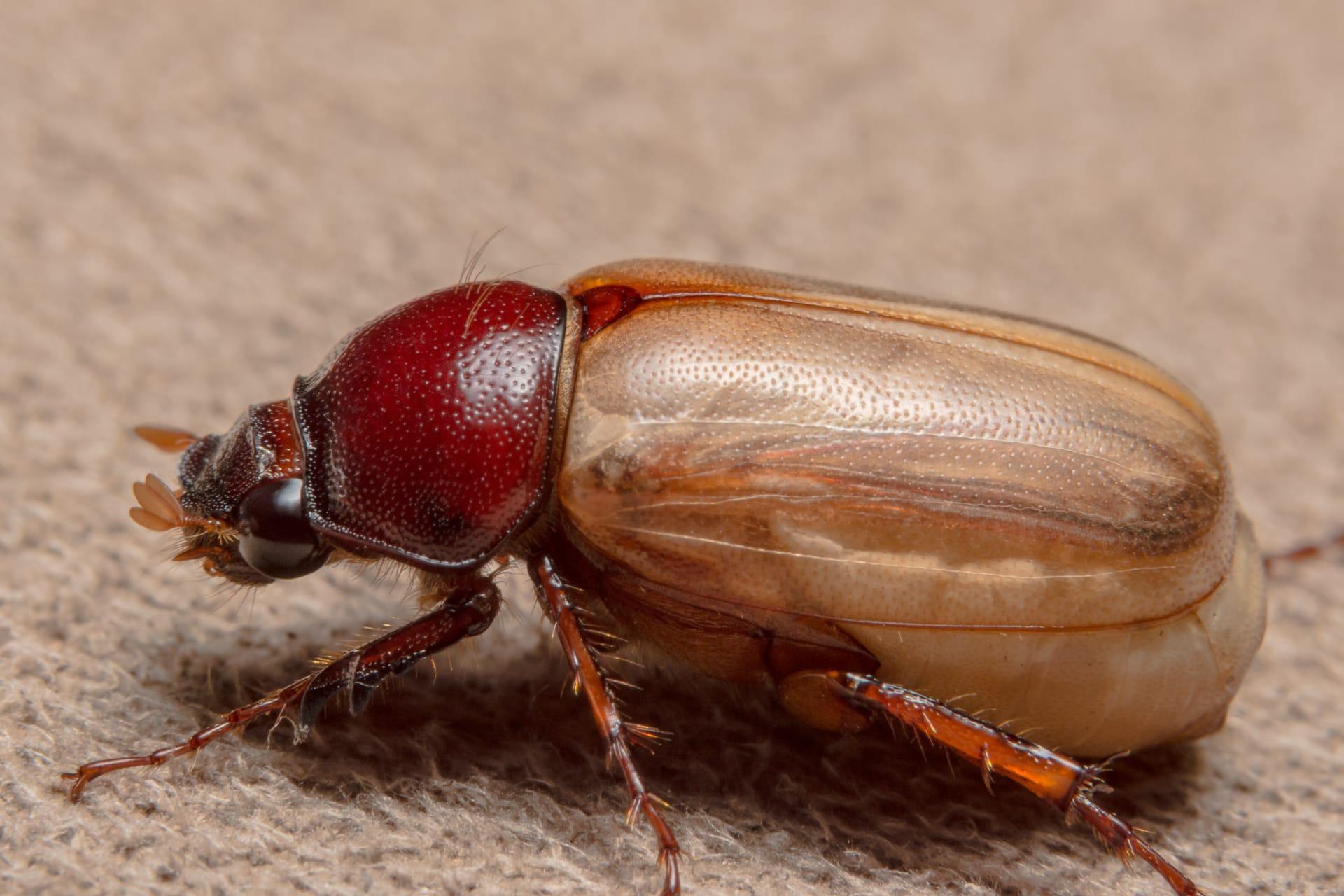1
June beetles, or June bugs as they're often called, are part of the large family of beetles known as scarabs. These beetles, generally active during the warm months, are famous for their clumsy flight. Interestingly, their flight is not just a random zigzag through the air. June beetles have antennae that are feathered and highly sensitive, which they use to detect pheromones released by potential mates. This means their seemingly erratic flight is actually a complex navigation towards a mate, guided by these chemical signals. Despite their awkward flying style, they are quite adept at locating each other in the vast night sky.
Another fascinating aspect of June beetles is their life cycle, particularly their larval stage. These larvae, known as grubs, live underground for up to three years before maturing into adult beetles. During this time, they feed voraciously on the roots of grasses and other plants, making them a well-known lawn pest. What's remarkable here is the transformation they undergo. From a plump, white grub roughly 2 to 3 inches in length, they metamorphose into a hard-shelled beetle measuring about 1 inch. This dramatic change is a classic example of complete metamorphosis in insects, showcasing nature's incredible ability to radically transform organisms from one stage of life to another.

2
The diet of June beetles is quite interesting. Adult beetles are known to feed on a variety of plants, but they show a particular fondness for the leaves of deciduous trees such as maple, oak, and birch. Their feeding habits can be quite destructive to these trees, as the beetles often eat the soft tissues between the veins of the leaves, leaving behind a skeletonized pattern. This not only affects the aesthetic value of the trees but can also impede their ability to photosynthesize effectively. However, in a natural ecosystem, this feeding is part of the cycle that helps in nutrient recycling and provides food for other animals, indicating their role in the ecological balance.
One of the most intriguing behaviors of June beetles is their attraction to light. During the night, they are often seen swarming around streetlights or porch lights. This phenomenon, known as phototaxis, is common in many insect species but is particularly noticeable in June beetles. The reason behind this attraction is not entirely understood, but it's believed that these nocturnal insects use natural light sources like the moon for navigation, and artificial lights can disorient them. This attraction to light has made June beetles a subject of interest in studies related to insect navigation and behavior.

3
June beetles are also known for the sounds they make. The buzzing or humming sound that often accompanies their flight is produced by the rapid beating of their wings. The wings of a June beetle beat at a frequency of around 43 times per second, which is quite fast for an insect of its size. This buzzing sound is not just a byproduct of flight but also plays a role in communication among beetles. During mating season, males and females use these sounds to locate and identify each other, adding an auditory aspect to their primarily chemical and tactile modes of communication.
Another interesting fact about June beetles is their impact on soil fertility. While the larvae are often considered pests for their root-eating habits, they inadvertently contribute to soil health. As they move through the soil and consume organic matter, they aerate the soil and help decompose plant material, ultimately contributing to the nutrient cycle. This process enhances soil fertility and structure, benefiting plant growth. It's a great example of how even a pest can play a beneficial role in its ecosystem, contributing to the balance of nature in a way that often goes unnoticed.

4
June beetles have a notable relationship with the moon. Studies have shown that these beetles are particularly active during the full moon. The increased brightness of the full moon nights seems to stimulate their activity, especially in terms of flight and mating behaviors. This lunar influence highlights an intriguing aspect of insect behavior, where natural light cycles play a crucial role in determining the activity patterns of these creatures. It also points to the sensitivity of June beetles to environmental cues, which govern their lifecycle and behaviors.
The coloration of June beetles is another interesting characteristic. While commonly perceived as being uniformly brown or greenish in color, there is actually a wide variation in their hues. The colors can range from a shiny metallic green to a reddish-brown, depending on the species and environmental factors. These colors are not just for show; they play a role in thermoregulation and camouflage. The darker colors can help in absorbing heat, which is vital for their activity in cooler temperatures, while the greens and browns help them blend in with foliage, protecting them from predators.

5
June beetles exhibit a unique defensive mechanism. When threatened, they often play dead, a behavior known as thanatosis. This act of feigning death can last from several minutes to over an hour, depending on the level of threat they perceive. This behavior is an effective survival strategy, as many predators are less likely to eat prey that appears to be dead. It's a fascinating example of behavioral adaptation in insects, showcasing their ability to use clever tactics to evade predators.
The June beetle's role in folklore and culture is quite notable. In various cultures, these beetles have been regarded as symbols of renewal and regeneration, likely due to their dramatic metamorphosis from larvae to adult beetles. They are also popular in children's games in some regions, where kids catch and gently tie a string to a beetle's leg, watching it fly in circles. This traditional interaction, while not encouraged due to the potential harm to the beetles, reflects the long-standing fascination humans have with these insects and their place in cultural narratives.